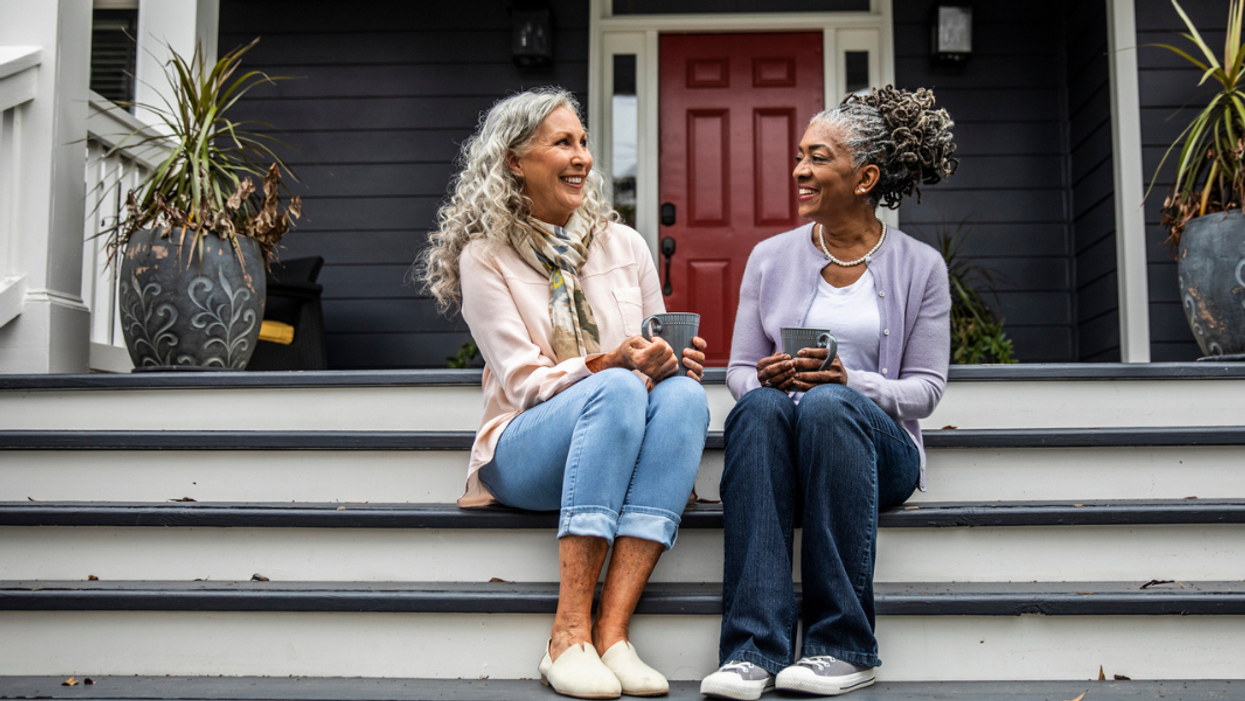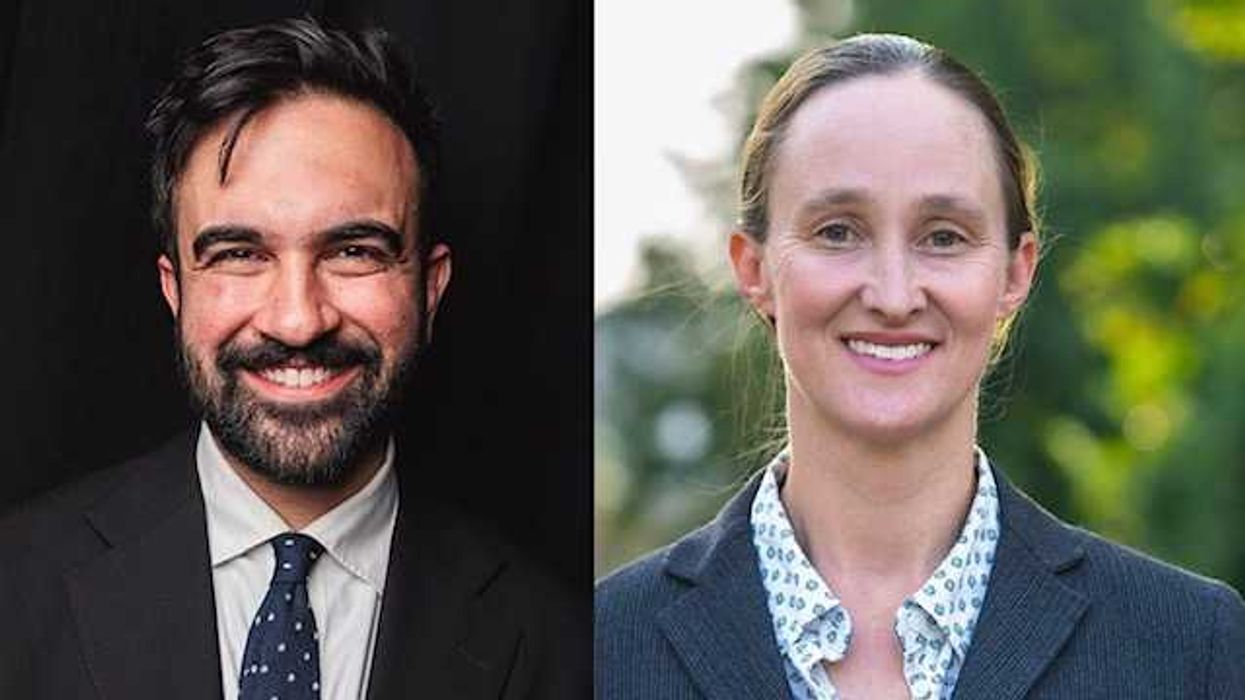André Thomas is co-host of Healing Race, and founder of Fortnum Solutions where he has a background in project management and using technology to serve corporate strategy.
Todd Levinson is co-host of Healing Race and co-founder of MATR, a tech start-up looking to bring meaningful conversations to social media. He has a background in peacebuilding, policy and psychology.
If you could ask any question to someone of another race, without fear of blowback or being shamed, what would you ask? What burning questions do you have about the role of race in others’ lives and in America? What questions about race have you held back from asking or do you think we need to discuss as a country?
Talking about race isn’t always easy. It can be fraught with landmines born of deep personal feelings and trigger blowback that can threaten relationships, careers, and reputations. But how can we resolve conflicts surrounding race - given the critical role they play in our larger national conflicts - if we can’t openly and constructively discuss our views about racial issues and the experiences that have shaped them?
That was the challenge faced by four guests on the Healing Race show. Their questions were compelling, sometimes even provocative, and reflected the kinds of questions many Americans likely ponder in the solitary confines of their minds… because too often in our culture we dare not ask the difficult questions or share the difficult views we hold about so contentious an issue as race.
So what did they ask?
Marcus, a Black conservative police officer from Texas, wondered why he was outcast from his Black community for deciding to become a cop. Wouldn’t you want “someone who looks like you wearing the uniform and doing the job?” His questions were all the more courageous with the video of Tyre Nichols’ deadly beating by Black officers having just been released the prior evening. Imagine the conversation that ensued.
Susan, a white libertarian who grew up in a Georgia town where the Klan was active, asked why, with so much talk about the need for conversations about race, someone like her gets shut down when they engage and share their different views, as she recently experienced.
Landon, a white moderate conservative with family roots in rural Utah, asked how we can put the racial past behind us and focus more on our future together and wondered what others saw as both valuable and upsetting about our U.S. history.
Marin, a Black moderate who consults on diversity, equity & inclusion strategy, asked what Landon and Susan had learned about Black people growing up, which moved every guest to think about and share the narratives that shaped their early thinking and how those narratives changed over time.
What unfolded was a “real” conversation, a human conversation, one that allowed us to see the people that exist beyond our preconceptions. We saw fears and resentments, empathy and epiphanies, differing views and common ground. We heard powerful stories, unexpected perspectives, and difficult questions. Most importantly, we saw minds and hearts open and a true desire to know each other better, learn from each other’s experiences, and make a human connection beyond our racial differences.
We saw Marcus understand the pain and anger felt by the Black community, their desire to feel like they “matter,” and their worry that they won’t get as much grace in police interactions; while we also saw Marin appreciate how police officers like Marcus put their lives on the line to serve their community and her hope for the day when Black Americans can look to police officers as role models and supports in the community without caution.
We saw Landon realize, after hearing Andre’s anxieties about not coming off as intelligent, how racial stereotypes can burden Black minds as they work extra hard to defy those stereotypes; while we also saw Andre’s skepticism about white motivations shift as Landon shared the genuine desire for diversity that exists in the workplace.
We saw Susan feel for Marin’s experience growing up having only seen white females as the standard of beauty; while Marin empathized with Susan being called out and dressed down for saying that racial progress has been made, asserting that white voices are very much needed and should be welcomed in conversations about race.
Finally, we saw Landon resonate with Marcus and Marin’s unexpected answer that they felt more like “victors” than victims in response to U.S. racial history; while Landon and Susan shared their desire that a deeper, more well-rounded racial history be taught in our country’s schools, as long as that history was not only seen through the lens of race.
The conversation demonstrated that we are not the simplistic, one-dimensional characters society projects onto us through the media and through the way we talk about one another. Our guests showed the deep emotion, shared humanity, and good will that exists in our country as they grappled with how race affects our lives, how it creates divisions in society, and how we can have better conversations about race and find a way forward together.
There has been an illusion of separation among the races perpetuated since the founding of our country. We have all been exploited by it, using it as a tool to wound each other physically and emotionally. The illusion keeps us in our racial groups, in our castes, in our heads, not supporting each other, telling stories of malice about each other, and preventing us from tackling our national challenges. When Marin, Marcus, Landon, and Susan came together, bearing their souls and minds through interactive questioning, their dialogue coalesced around one theme: to understand and be understood. There is value in discussing our feelings about race and racial issues in a way where no one is diminished and everyone is amplified.
Yes, race isn’t and shouldn’t be everything about how we interact with one another in this country. But race also isn’t just anything when it comes to the American experience and it is long past time to heal this wound.
We hope you’ll join the Healing Race show on that journey as a viewer, a guest, a supporter… and most importantly, a fellow traveler who seeks out and leans into difficult conversations that can be part of the healing race in our country. We also welcome you to our National Week of Conversation events - where we will cover how to have transformative conversations about race and discuss some of the most compelling and provocative clips from our show with you. To learn more about how to get involved, email us at info@healingraceshow.com, and you can enjoy our conversations here.

















